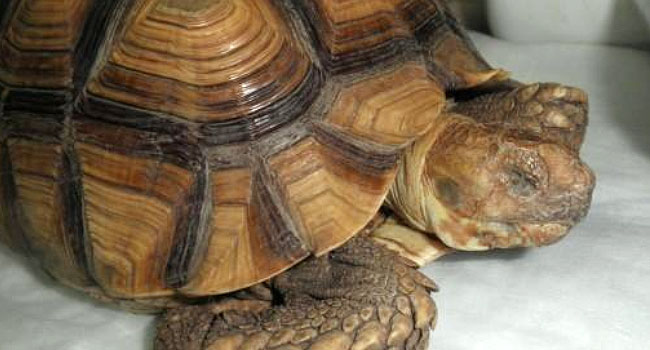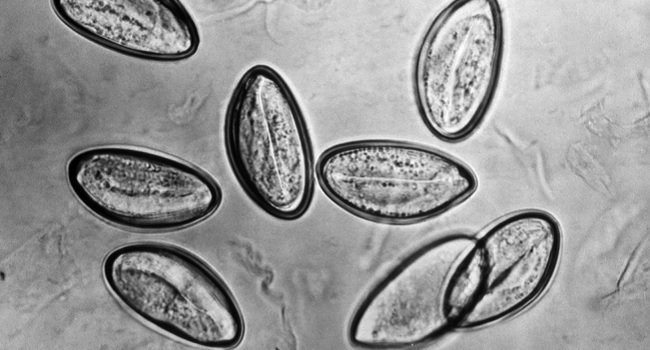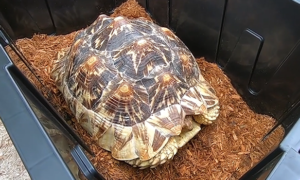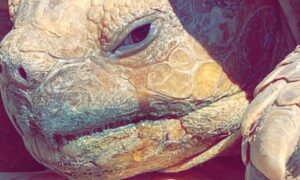There are tons of parasites that can infect Sulcata tortoises. Below you will find just an example of common tortoise parasites. To avoid worms and parasites, ensure good housing, proper diet, clean water and regular veterinary exams.
External Parasites
The three most common types of external parasites that can plague tortoises are ticks, mites and flies.
Ticks
Ticks will burrow and latch onto the upper legs, neck and base of the tail. You may notice ticks in the arm pit areas of your tortoise. To remove ticks off tortoise, use Vaseline to suffocate the tick. It will release and back out of the skin for you to pull off. Do not use matches or tweezers. You do not want to leave the tick’s head inside the skin, because it can cause irritation and infection.
Mites
Mites are general black or red and about the size of a poppy seed. Getting rid of mites in a tortoise enclosure can be a challenge and may take weeks.
Tortoises can pick up mites up from other reptiles or infected bedding. When introducing a new tortoise to your colony, it’s important to quarantine the new animal away from your existing tortoises in order to reduce the spread.
If you have mites in an indoor enclosure, toss or bake any natural materials, like substrate or wooden hides. Baking in an oven will kill any adult mites and eggs. Thoroughly clean any other décor in the enclosure. Because mites can travel outside the enclosure, you’ll also need to also clean the area around the enclosure to ensure you’ve rid the area of mites.
Flies
Flies can be a problem in outside enclosures. Regular black flies are attracted to cuts, wounds and poop. They’ll lay eggs in the wound or any runny stool left on the skin. When the eggs hatch, the maggots will bore into the skin can release toxins that can become fatal. Use fly traps if you notice flies are coming around.

Internal Parasites
There are different types of internal parasites that can infect your Sulcata. In most cases, tortoises will contract worms from contaminated food, water or substrate. It’s also possible that a tortoise can get parasites from another tortoise or reptile.
Roundworms
Roundworms (nematodes) are common in tortoises. Nematodes are usually longer than wide and unsegmented. There are over 500 different types of roundworms or nematodes that can infect your tortoise. They generally affect the stomach and intestines but can travel to the lungs and other tissues. If severe, you may see weight loss, as well as diarrhea, and possibly vomiting. You may notice worms in the Sulcata’s stool or vomit.
Hookworms
Hookworms are small, thin and difficult to see. They latch onto intestinal walls and live on the blood. Hookworms can cause anemia, weakness, fatigue, bloody stool and wasting away, and if enough hookworms are present, they can cause intestinal blockage and death.
Tapeworms
Tapeworms are actually rare in tortoises. However, if your tortoise has tapeworms, you may notice tiny moving grains of rice in your tortoise’s stool.
Flagellates
Flagellates can aid in digestion, but in large numbers, they can cause diarrhea and dehydration. They are transmitted through contaminated water. Some flagellates (hexamita parva) can invade the renal-urinary system, potentially causing an ammonia smell to the urates. You may notice blood in the urine or urates. Hexamita parva can destroy the kidneys if left untreated.
Entamoeba
Entamoeba is a pathogen found in contaminated water. It can cause diarrhea. However in serious instances, it can case invasive liver abscesses. Entamoeba is more common in turtles. However, if you have turtles and tortoises living in the same habitat, the tortoise can drink the contaminated water.





